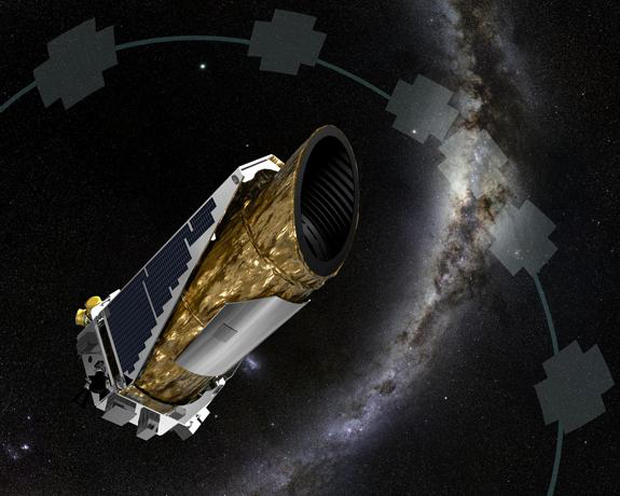Kepler Planet-Hunting Spacecraft in 'Emergency Mode'

NASA's prolific Kepler planet-hunting spacecraft appears to be in trouble.
Kepler's handlers learned during a routine contact on Thursday (April 7) that the space telescope — which has discovered more than 1,000 alien planets since its March 2009 launch — is now in "emergency mode" (EM).
"EM is the lowest operational mode and is fuel intensive. Recovering from EM is the team's priority at this time," Kepler mission manager Charlie Sobeck, of NASA's Ames Research Center in Moffett Field, California, wrote in a mission update Friday (April 8). "The mission has declared a spacecraft emergency, which provides priority access to ground-based communications at the agency's Deep Space Network."
The last regular contact with Kepler occurred on April 4, and the spacecraft was healthy and operating properly at that time, Sobeck added.
It could take some time to diagnose and fix the problem, because Kepler orbits the sun rather than Earth, and there is thus a significant time delay in communications. At the moment, it takes 13 minutes for a signal to travel the nearly 75 million miles (121 million kilometers) from mission control to Kepler and back again, Sobeck wrote.
Kepler spots alien planets by noting the telltale brightness dips they cause when they cross their host stars' faces from the telescope's perspective. The $600 million mission has been incredibly successful; to date, Kepler has detected 1,041 confirmed exoplanets — more than half of all known alien worlds — as well as about 3,600 additional "candidate" planets, the vast majority of which will likely be confirmed eventually.
But Kepler has run into trouble before. In May 2013, the second of its four orientation-maintaining reaction wheels failed, ending the spacecraft's original planet hunt.
Breaking space news, the latest updates on rocket launches, skywatching events and more!
Mission managers soon figured out a way to stabilize Kepler's position in space using the remaining two reaction wheels and sunlight pressure, and the spacecraft embarked upon a new mission called K2. During K2, Kepler has continued to search for exoplanets but is also studying other cosmic objects and phenomena, such as the exploding stars known as supernovae.
Follow Mike Wall on Twitter @michaeldwall and Google+. Follow us @Spacedotcom, Facebook or Google+. Originally published on Space.com.

Michael Wall is a Senior Space Writer with Space.com and joined the team in 2010. He primarily covers exoplanets, spaceflight and military space, but has been known to dabble in the space art beat. His book about the search for alien life, "Out There," was published on Nov. 13, 2018. Before becoming a science writer, Michael worked as a herpetologist and wildlife biologist. He has a Ph.D. in evolutionary biology from the University of Sydney, Australia, a bachelor's degree from the University of Arizona, and a graduate certificate in science writing from the University of California, Santa Cruz. To find out what his latest project is, you can follow Michael on Twitter.
